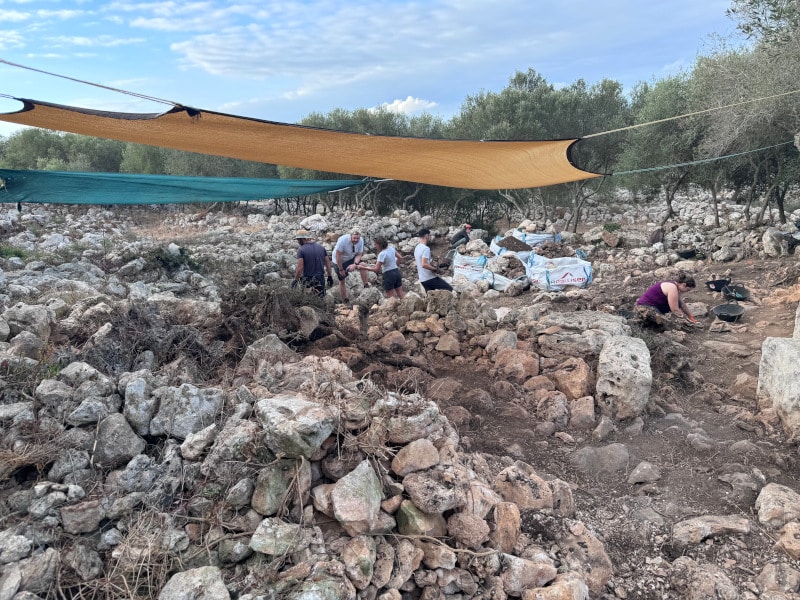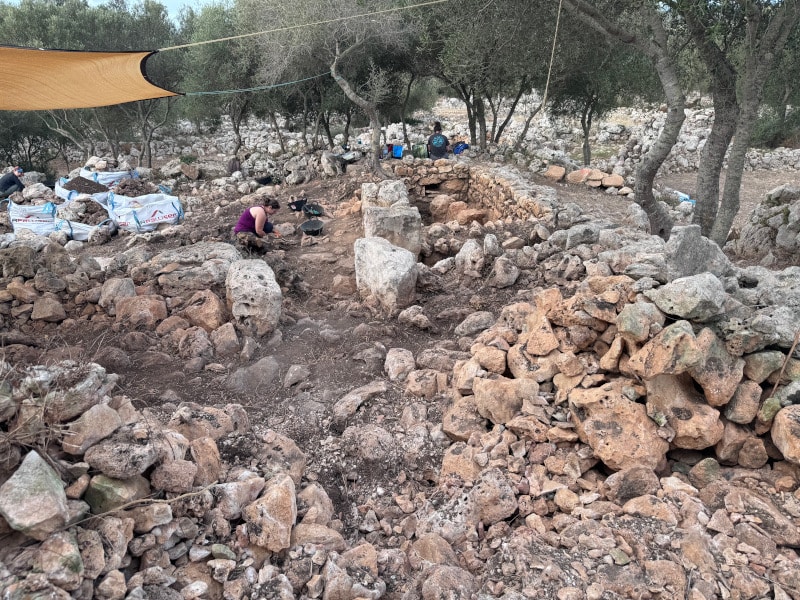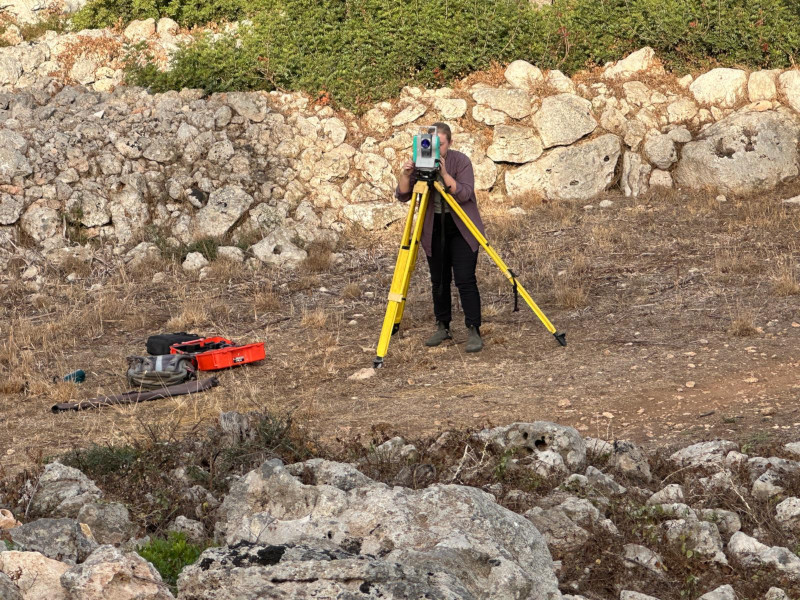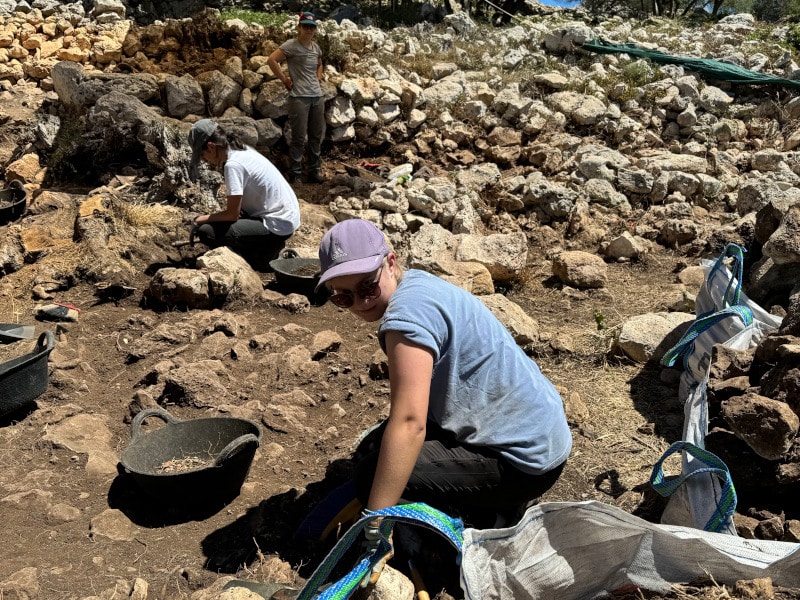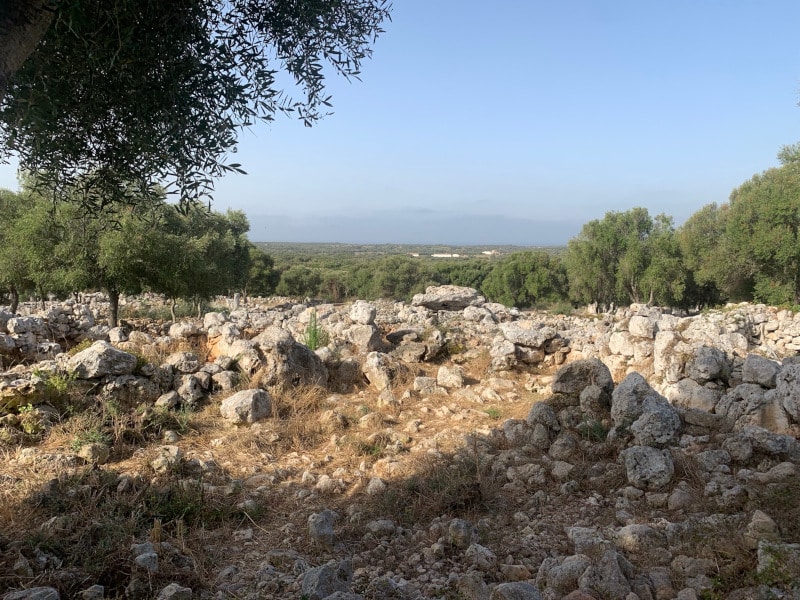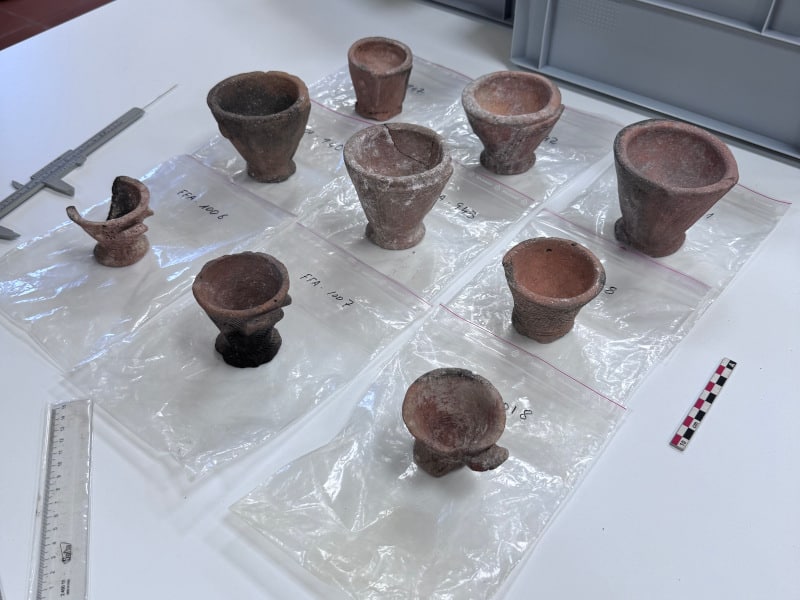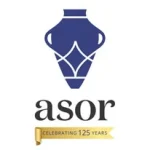
Multi-Temporal Excavation with the Menorca Archaeological Project at the Site of Torre d’en Galmés, Menorca, Spain
Evelyn Patterson, 2024 Strange-Midkiff Scholarship Recipient
With the generous award of the Strange–Midkiff Fieldwork Scholarship from ASOR this summer, I was able to return for a second year of excavation with the Menorca Archaeological Project (MAP) at Torre d’en Galmés, Menorca, Spain. The MAP project is directed by Dr. Amalia Pérez-Juez (Boston University), Dr. Alexander Smith (SUNY Brockport), and Dr. Kathleen Forste (Boston University), and involves the work of a team of truly spectacular people. Last summer, I received a Summer Undergraduate Research grant from SUNY Brockport to travel to Menorca and work with the MAP team for one month from June 15th to July 15th. During the following fall and spring semesters, I did independent research for an Honors College thesis based on an object found by the MAP team in 2021. I was thrilled to be invited back to excavate for another month this summer, and this fieldwork scholarship made that possible.
The Menorca Archaeological Project is primarily concerned with the investigation of the multi-temporal remains of Torre d’en Galmés, the largest preserved prehistoric site in the Spanish Balearic Islands. This site displays evidence of multiple periods of occupation and interaction, with an array of megalithic indigenous domestic structures dating to the Post-Talayotic or Late Iron Age (550-123 B.C.E.) and a series of later structures built during the Medieval Islamic period of occupation in the 12th and 13th centuries C.E. The stark contrast and interactions of the structures is fascinating and raises an interest in understanding the use and re-use of spaces and materials over time, and the shifting social structures of the populations that used them, both within the communities of Menorca itself and within the greater Mediterranean context.
